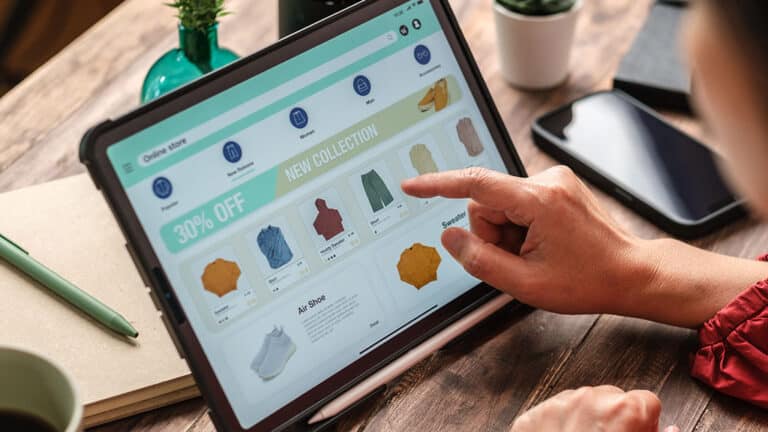How to Use Unconventional Marketing Methods to Grow Your Online Brand
The popularity of e-commerce continues to rise. In the US alone, it is expected that e-commerce sales will reach nearly 2 trillion dollars in 2016. Online has become the first option to many consumers, but if you want to take advantage of this, you need great marketing.
We know that social networking strategies, email marketing, SEO, etc. work for the growth of your business, but what is the next step? How can you bring these marketing channels to the next level?
In today’s post we will discuss how the marketing ecosystem is changing and what growth opportunities can be generated.
How to find viable trends in marketing
To make your online store to succeed, you’ll need to adapt to changes in the market. If you are using a SEO strategy to drive traffic and generate sales, what will happen when you fall in the rankings? What will you do to address this situation? Where are you going?
If you really want to improve your marketing strategy and brand positioning, perhaps it’s time to look at unconventional methods to push your products. Why? Because things that are often thought of as unconventional will eventually become mainstream. Just 15 years ago, if someone would have told you that online shopping would usurp traditional brick-and-mortar stores, you would have laughed. In 2001, e-commerce was a novel idea; now it’s the norm.
Use Emojis to Communicate to Your Customer Base

Emoji have quickly become a very important part of how we communicate with others. People are using emojis as shorthand to describe how they’re feeling.
But when emojis first burst onto the scene, no one would have imagined they would be used by businesses, sport teams, government agencies.
It’s so mainstream now that the Oxford Dictionary has entered the term into its lexicon:
Emoji- A small digital image or icon used to express an idea or emotion in electronic communication
Even if you don’t take emojis seriously, you may have noticed the trend. Large businesses are using it to crearte a friendly atmosphere in their social networking, and they’re using it to inject some personality and humor into what would normally be dull messages and content. And it’s working.
Marketing Land did a study and found that tweets with an emoji average 25% more engagement than tweets without one.
Emoji are a fun, cute and quick way to convey a message. It is an approach that’s a little more personal, and it can increase engagement. If you send emojis to your friends and family, try to use it on your business’ Twitter or Facebook.
Creating Serial Video Content
People love videos more than ever, and they especially love serial content. And now it’s easier than ever to create viral video content.
Facebook has made changes to its video platform in the last 18 months with the aim of making it much easier to share. During 2014, Facebook had on average 2 billion views on its platform video a day, and has continued to grow since the ice bucket challenge was generated.
A site called Elite Daily noted this and expanded its video creation team, from 8 to 16 people, which were dedicated to produce two pieces of video content a day. Their videos obtained over 120 million visits in Facebook during the past year. Elite Daily was recently purchased by the Daily Mail for over $50 million.
The point is simple: Viral videos generate views and they make money. With it in mind, start thinking about different videos as content, which you can produce for your business or brand.
Here are some characteristics that viral videos share:
- Evokes positive emotions
- Has some degree of humor
- Is understood quickly and easily
- Is easy to share
- Creates a connection between the content creator and the content consumer
The Virtual Reality Shopping Experience
By 2018-2019, expect virtual reality to take the world by storm. Companies like Samsung, Oculus, and Google have thrown their hats into the ring, and you can expect more to do the same. Contrary to popular thought, virtual reality is more than just games and entertainment, it can be used to create in-depth shopping experiences.
There are a great deal of possibilities. Fashion stores can allow shoppers virtually to see their products in-store, with 360 degree angles, as this offers a more immersive experience.
Some furniture stores have tested VR functionalities by allowing consumers furnish their homes while in a virtual setting. This way, consumers can see first-hand the detail of the furniture and how the furniture in a home setting.
Virtual reality, as it stands right now, is not ready for mass market consumption. This is due to a few factors, but here’s the main one: VR technology is still expensive to own. This is something that is expected to change within the next few years, which is also when we’ll really see the viability of virtual reality in the retail space.
Conclusion
What seems unconventional at the moment may be entirely mainstream in a few years from now. Don’t make the mistake in disregarding trends in marketing.
Are you ready to discuss your next e-commerce website or marketing project with the leader in WooCommerce website development and digital marketing? If so, contact Zen Agency today! We are a group of Marketing Geniuses.


















